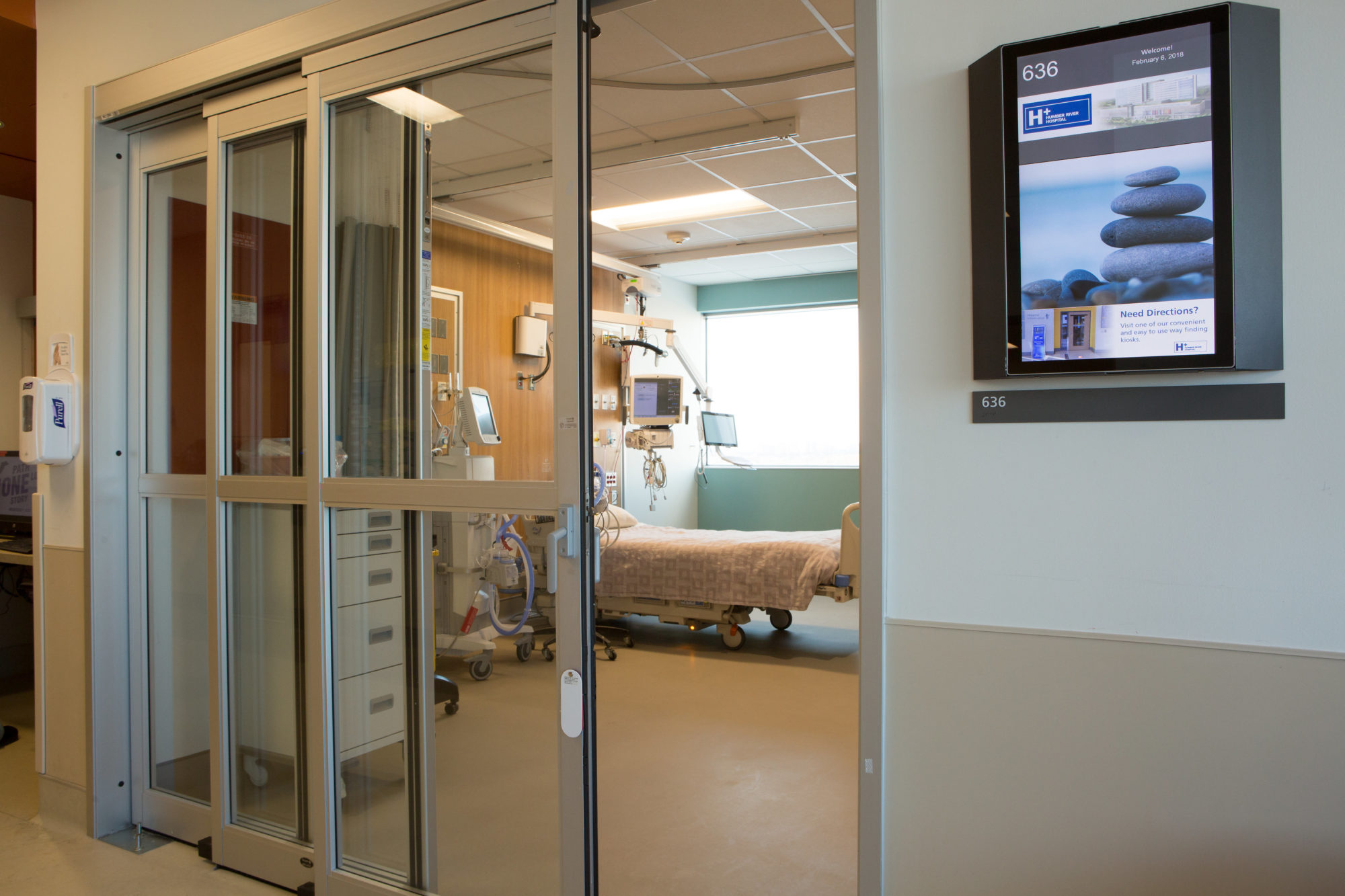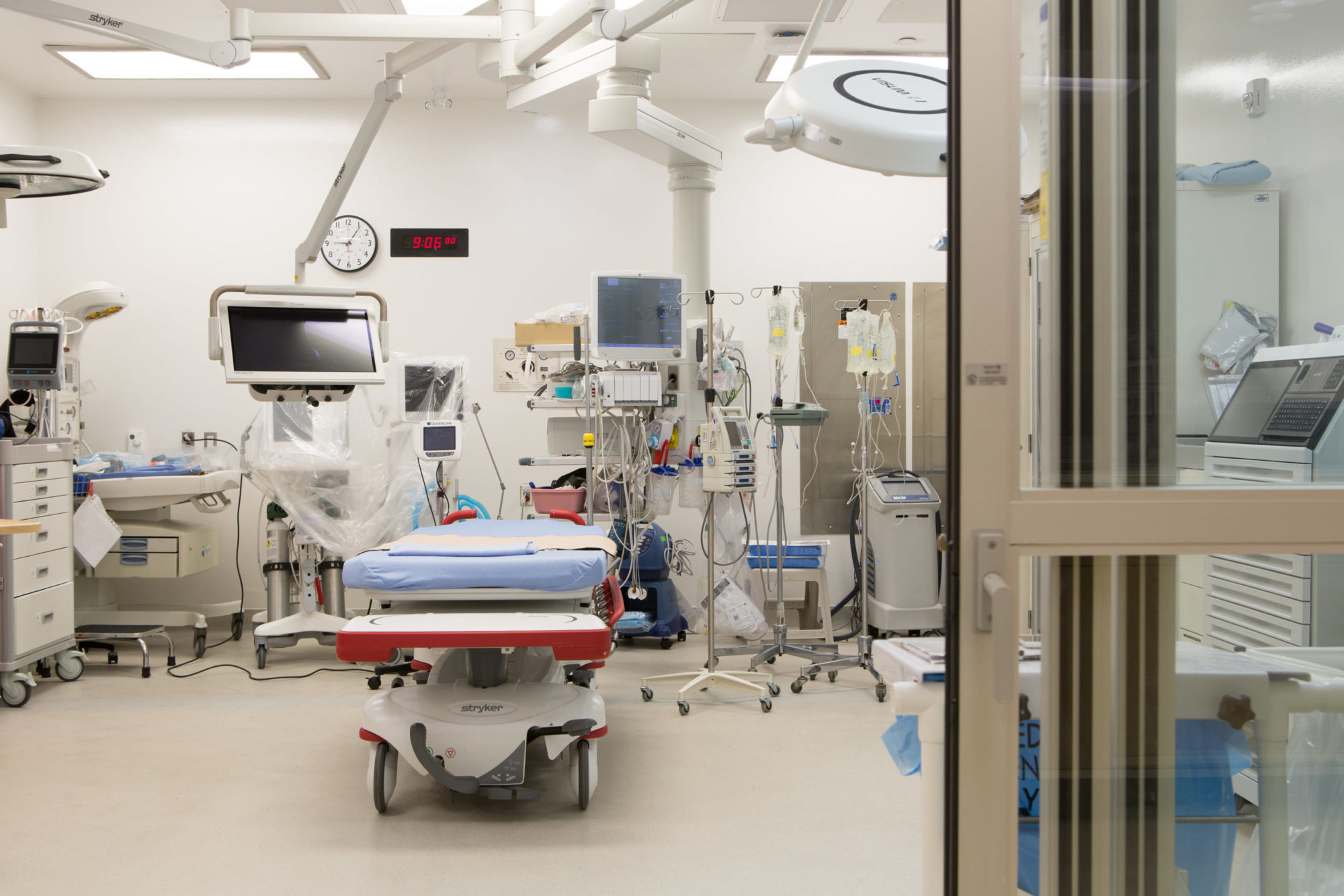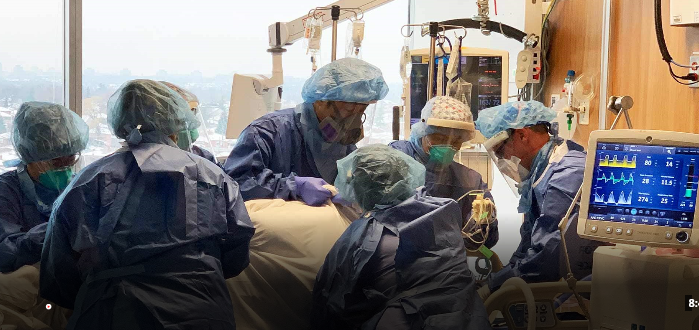How Humber River Hospital was Designed With Pandemics In Mind
Humber River Hospital’s Wilson Site opened its doors in October 2015, after its designers learned many lessons from Toronto’s SARS epidemic of 2002-2003. In addition to the Hospital’s leading-edge digital features, designers of our new Hospital factored in pandemic and hazmat situations while creating plans for the building. This design acumen coupled with donor support has helped turn the vision of a “pandemic-safe” hospital into a reality.
Here are 5 ways Humber River Hospital is designed to prevent the spread of viruses like COVID-19:

87 rooms at Humber River Hospital can become negative pressure, like this one in the ICU.
Negative Pressure Rooms
Patients thought to be contagious are treated in “negative pressure rooms”. In a negative pressure room, air flows in from the hallway. So, if someone is coughing inside the room, none of their germs are going to flow out to other rooms or common spaces because of the direction the air is blowing. Anyone in the room will be properly garbed in a gown, gloves, and a mask with face protection, and outgoing air is sent right out to the roof, away from people.
87 rooms at Humber River Hospital can become negative pressure, there are negative pressure rooms in every department, and the Hospital is capable of isolating entire departments under negative pressure!
Decontamination Rooms
Many negative pressure rooms at Humber River Hospital have adjacent decontamination rooms, which lowers the risk of contamination when staff move between rooms. This is where staff follow protocol for removal of personal protection equipment.
Hazmat Rooms
Patients who arrive by ambulance can be placed into a system of isolation from the moment they arrive, starting with the hazmat entrance and room. This room contains a shower and has no soft products in it, so everything is easier to clean and disinfect. Removed from the general hospital population, properly outfitted nurses and doctors can use the hazmat room to assess whether a patient needs to be moved into a negative pressure room close by in the Apotex Emergency Department, or to one of the other negative pressure rooms in the Hospital.

This room in Humber River Hospital’s Apotex Emergency Department can quickly become negative pressure.
Fresh Air
Humber River Hospital is filled with fresh air. Rather than recirculating the same air around the Hospital, old air is pushed out and replaced with fresh air from outside, which helps with infection control.
Convertible Ambulance Bay / Pandemic Centre
Fortunately, the final infection control feature on this list was not necessary during the first wave of the coronavirus. Humber River Hospital’s ambulance bay, which holds up to eight ambulances, can be turned into a pandemic centre. The ambulance bay is outfitted for showers, if needed, and has water containment units underneath the floor. This means that if the garage is being used as a pandemic centre, potentially contaminated wastewater can be kept away from the rest of the Hospital’s water system.
WATCH NOW – Dr. Leon Rivlin on Global News:
Coronavirus: Toronto emergency room doctor says team is prepared for ’round two’ of COVID-19






